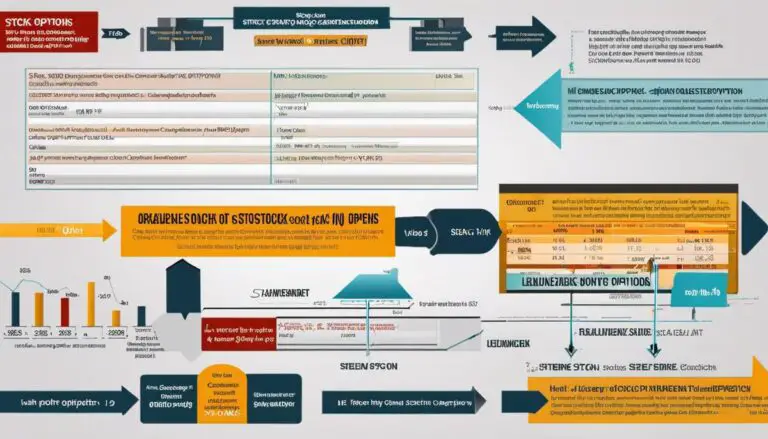Embarking on the journey of stock investing can be akin to navigating a labyrinth laden with opportunities and traps. A clear grasp of the common missteps in this domain is pivotal for investors aiming to sculpture a robust financial future. This discourse delves into the crucial considerations every market participant should heed, illuminating the path to a well-informed and strategic investment approach. As we dissect the imperative of diversifying investment portfolios, the necessity for diligent research and due diligence, the danger of succumbing to emotional trading, the stealthy erosion by fees and taxes, and the misconception of relying solely on past performance, we empower ourselves to mitigate the risks and augment the prospects of achieving our investment goals.
Failing to Diversify Investment Portfolio
Diversification: The Investor’s Armor Against Uncertainty
In the high-stakes realm of investing, putting all eggs in one basket isn’t just imprudent; it’s a tactical error with potentially disastrous consequences. A well-rounded investor recognizes that market forces are as unpredictable as the weather, often changing course with little to no warning. Why squander hard-earned capital on a single avenue when a diversified portfolio can shield against the unforeseen, delivering more consistent results over time?
Consider this: single-industry investments are often at the mercy of specific economic changes—regulatory shifts, technological disruptions, to name a few. One unfavorable policy or emerging competitor can send shockwaves through an industry, torpedoing stocks that seemed unsinkable. Diversification acts as a bulwark, spreading risk across various sectors, smoothing out the inevitable valleys one may face should one sector underperform.
Moreover, diversification isn’t merely a safety net; it’s an offensive play. A tapestry of investments across asset classes—stocks, bonds, real estate, and beyond—opens multiple streams of opportunity. While one asset class may stagnate, another may surge, balancing out the overall performance. It’s simple portfolio physics: not all assets move in unison. When some zig, others zag. Leveraging this natural market ebb and flow is paramount.
The contemporary investor is also not limited by geographic boundaries. Global diversification unlocks the door to burgeoning markets and industries worldwide. After all, innovation and growth are not exclusive to home soil. As economies outside mature markets gain momentum, there’s a wealth of potential lurking in international investments. Why rely solely on the domestic market’s pulse when the world’s heartbeat can rhythmically stabilize and sustain long-term growth?
In closing, the savvy investor knows there’s truth in the old adage—don’t put all your eggs in one basket. A nimble, diversified strategy is both a defense mechanism and a proactive step towards capitalizing on a broad spectrum of opportunities. It allows one to pivot as market dynamics shift, not just to survive market turmoil, but to thrive within it.
Thus, whether a burgeoning investor or a seasoned financial connoisseur, embracing diversification is not just a recommendation; it’s a cornerstone of a resilient investment philosophy.

Neglecting Research and Due Diligence
In the high-stakes game of stock market investing, thorough due diligence is the bedrock of astute decision-making. Without it, market participants expose themselves to blindsiding pitfalls, resulting in potentially damaging financial consequences. Skimping on homework can lead to ill-informed investments, spurred by the allure of trends or buzzworthy tips rather than solid, empirical research.
One major repercussion of inadequate research is the susceptibility to stock market bubbles and crashes. Without an understanding of genuine value versus speculative price, investors can fall prey to over-hyped stocks that carry a greater risk of plummeting when the bubble bursts. Additionally, failing to analyze a company’s fundamentals, such as its financial health, competitive advantage, and management quality, can result in holding securities that may appear profitable in the short term but are actually eroding value in the longer horizon.
Moreover, neglecting to monitor ongoing macroeconomic indicators and industry-specific developments is tantamount to sailing a ship through a storm with no compass or map. Economic policy changes, geopolitical events, or regulatory shifts can drastically impact business operations and market sentiment, highlighting the need for investors to stay informed and agile.
A lesser discussed yet equally critical dimension where homework is paramount is tax efficiency. By not understanding the tax implications of various investing strategies, stock market participants may find their returns significantly diminished through hefty taxation, sometimes to the point of nullifying gains.
It’s imperative to acknowledge that the market does not forgive ignorance. In a digital age where information is plentiful, failing to utilize the vast resources at an investor’s disposal is an unforced error that can severely hamper financial objectives. Each missed detail or overlooked report is a chip in the armor of one’s investment strategy.
Indeed, strategy is key. Beyond just choosing the right stocks, savvy investors craft their approach based on thorough analysis and adapt their techniques to align with market moods and movements. Without a strategy reinforced by thorough due diligence, the investor’s portfolio is nothing more than a ship adrift at sea, vulnerable to every wind of change and wave of volatility.
In conclusion, as swiftly as the market evolves, so too must the diligence of its participants. Success is reserved for those who recognize that the backbone of any sound investment strategy is unwavering commitment to doing their homework—comprehensive, rigorous, and unrelenting. Those who skimp on this vital process may find themselves left behind, wondering where they missed the crucial turn on the path to sustainable financial growth.

Giving Into Emotional Trading
Shifting from the foundational tenets of diversification and diligent research, let’s delve into the often-overlooked realm of emotion in investment decisions — what could be called the ‘Achilles’ heel’ of investment strategy. Emotional decision-making, while inherently human, can quickly derail even the most calculated long-term investment plans. Fueled by euphoria or seized by panic, investors who yield to their emotions may compromise the growth and security of their portfolios.
One key emotional trigger that throttles long-term success is the fear of missing out (FOMO). When markets scale new heights, the lure of quick wins can cause investors to abandon long-term strategies for the surge of short-term gains. This susceptibility to market hype can result in overexposure to high-risk investments at the peak of their valuations, contravening any prudent approach to entry points and valuation metrics.
Conversely, let’s discuss risk aversion spawned by market downturns. It’s a psychological reflex to fear loss more than we value gains. The temptation to abandon ship during a market correction often leads to the realization of losses that might have been on paper otherwise. Moreover, it precludes investors from snapping up high-quality assets at discounted prices — a move that aligns with the shrewd investor’s playbook.
Another snare is attachment bias. Loyalty to a particular stock or sector due to past successes can cloud judgment. Holding on to underperforming assets, driven by sentimental valuation rather than market realities, can significantly stunt portfolio growth.
Furthermore, the overconfidence effect can blindside savvy investors. A run of successful investments might instill a false sense of invincibility, leading to complacency in research and due diligence, over-leveraging, and exposure to unnecessary risks.
It’s critical to emphasize that market timing, driven by emotional impulses, usually falters against the prowess of time in the market. Attempting to outsmart market cycles may result in missed opportunities and a detrimental impact on compounding returns, a key driver of wealth accumulation.
Strategies to mitigate emotional bias include establishing and adhering to a well-defined investment policy statement (IPS), consulting with financial advisors, embracing technology for more systematic decision-making, and continuous education to counterbalance instinct with intellect.
In essence, navigating the intersection of human emotion and investment demands rigorous self-discipline, an unwavering commitment to strategic principles, and an intimate awareness of personal risk tolerance. Remaining impervious to the psychological sways of market sentiment is an unsung discipline and the mark of true investment acumen.

Overlooking Fees and Tax Implications
Understanding Fees and Taxes: The Unseen Forces Shaping Your Portfolio Performance
Beyond the readily acknowledged strategies that shape a healthy investment portfolio, there lies a critical, often overlooked aspect: the impact of fees and taxes on investment profits. For astute investors, keeping a keen eye on these factors is as essential as choosing the right assets for diversification.
Start by examining investment fees. In the realm of investments, transaction fees, management fees, and expense ratios represent significant cuts into potential profits. These seemingly small percentages can compound over time, turning into substantial drains on portfolio performance. Smart investors must constantly evaluate the cost-effectiveness of their chosen investment vehicles, ensuring that fees don’t cannibalize their hard-earned returns.
On to the tax front, this is not a topic to brush aside. Tax implications can significantly shift the profitability of an investment. Short-term capital gains, for instance, are taxed more heavily than long-term gains. Intelligent investment planning involves understanding the nuances of tax laws to maneuver around the potential pitfalls that can chip away at profits. Utilizing tax-advantaged accounts such as IRAs or 401(k)s, considering tax-loss harvesting, and being mindful of holding periods are methods that the shrewd investor applies to keep the taxman at bay.
Additionally, ignorance of tax efficiency within investment strategies can transition from a minor leak into a major breach in a wealth-building journey. The sophisticated investors employ the use of assets like exchange-traded funds (ETFs) or municipal bonds, which are often favored for their tax efficiency, to safeguard their returns from excessive taxation.
Undoubtedly, fees and taxes serve as the invisible adversaries to successful investing. While the pursuit of high returns captures the headlines, the real victors in the investment world are those who optimize their portfolios for after-fee, after-tax performance.
As the conversation about diversification, due diligence, and the emotional component of investing continues, the emphasis on fees and taxes cannot be overstated. Neglecting them is equivalent to overlooking the silent forces that can either fortify or unravel the potential of a well-thought-out investment strategy.
In conclusion, let this serve as a clarion call to take charge – by paying meticulous attention to the less glamorous yet equally significant details of investing, fees, and taxes. Those who heed this advice may find themselves in far better standing as their foresight shields their investments from the unseen erosion of their profits. There are no magic formulas here, simply the relentless pursuit of maximizing returns by minimizing the silent subtractors in one’s investment equation.

Chasing Past Performance Instead of Future Potential
Why Investing Based on Historic Triumphs Is A Misguided Strategy
When navigating the rigorous twists and turns of the investment landscape, it’s natural to be drawn towards the paths previously paved with success. Temptation beckons to replicate the historic triumphs of storied stocks or sectors, with the hopes of capturing lightning in a bottle yet again. However, this approach is riddled with pitfalls that can undermine the very foundations of investment prosperity.
Historical Performance Is Not an Investment Prognosticator
The adage “past performance is not indicative of future results” is more than regulatory fine print—it’s a universal investment truth. Markets are dynamic realms, where the intricacies of technology, consumer behavior, and regulatory environments are perpetually shifting. Industries that once soared on the tailwinds of innovation can become clouded by the next disruptive force. Investing on the basis of yesteryear’s victors fails to account for the forward momentum of market evolutions and the unpredictability of sectoral shifts.
The Mirage of Sequential Success
A company or sector that has outperformed in the past does not inherently possess the Midas touch. Success is often a confluence of factors—market conditions, leadership, competitive advantage—that may not persist ad infinitum. Anchor bias can lure investors into a false sense of security, believing that what thrived will continue to do so. It’s critical to ascertain whether the drivers of past success are sustainable or a receding tide destined to ebb.
Regulatory Changes and Compliance
Reflection on historic glory discounts the evolving nature of legislation and compliance requirements. Regulation is a potent force that can alter the playing field overnight, transforming winners into strugglers with the stroke of a legislative pen. Keeping a pulse on the regulatory horizon and potential implications for different industries is vital for robust investment strategies.
Technological Disruption
In the age of digital revolution and innovation acceleration, technological advancements upend existing paradigms at an astonishing pace. A strategy steeped in historical achievement often underestimates the game-changing abilities of emerging tech, crowning incumbents unaware of agile disruptors waiting in the wings.
The Temptation of Concentration
A portfolio mirroring the historical high-fliers risks concentration in areas that may no longer sync with the current economic milieu. This presents a perilous lack of diversification, which can expose investors to amplified risks if once-golden industries experience downturns.
The Human Element: Sentiment vs. Substance
Investing in the aura of bygone wins is sometimes driven more by sentiment than substance. Financial markets are susceptible to the whims of investor sentiment, which can inflate values based on nostalgia rather than financial metrics. Savvy investors gauge the substantive currents flowing beneath the nostalgic veneer.
Systemic Shifts and Global Interplay
Lastly, historical performance often fails to account for systemic shifts and the nuanced interplay of global economies. Shifts in geopolitical landscapes, trade agreements, and cross-border relations can have profound implications on investments, rendering historical data less reflective of the contemporary investing scenario.
To strategically sail the volatile seas of investing, it’s paramount to utilize a compass oriented towards future horizons, informed by due diligence, technological insights, and an astute understanding of macroeconomic drivers. Harnessing the winds of change with forward-looking analytics, while being cognizant of the limitations inherent in historical triumphs, sets the stage for crafting portfolios resilient enough to thrive in tomorrow’s market dynamism. Make no mistake—investment is not an exercise in historical reverence; it is the art of navigating the unknown, armed with a strategy designed to anticipate the future, not replicate the past.

The realm of stock investing beckons with the promise of prosperity, yet it is fraught with pitfalls that can thwart the unwary. Armored with the insights discussed, investors stand poised to eschew the common blunders that beset many. Embracing a philosophy that values diversity, empirical research, emotional equilibrium, cost awareness, and forward-looking analysis is not just prudent—it’s indispensable for long-term success. Steered by these principles, one’s investment voyage is more likely to culminate in a port of financial resilience and rewarding returns, navigating beyond the choppy waters of short-sighted mistakes.



